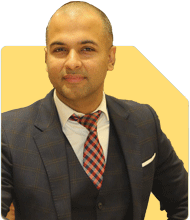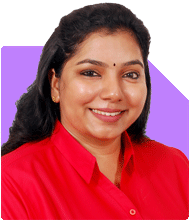Ramalingam Kalirajan |7478 Answers |Ask -Follow
Mutual Funds, Financial Planning Expert - Answered on Jun 25, 2024
He has an MBA in finance from the University of Madras and is a certified financial planner.
He is the director and chief financial planner at Holistic Investment, a Chennai-based firm that offers financial planning and wealth management advice.... more

Hello sir..I am 48 years old and have a monthly income of 1.45 lakhs....and rental income of 75K....I have a personal loan of 20 lakhs which I took to buy. Land worth 50 lakhs..other than this i have a hand loans of 18 lakhs.....the only saving i have is my epf which is a round 20 lakhs.....I intend to clear all my debt in another 3 years and will be savings 1.2 lakhs per month.....I have two houses one commercial.. where I get above mentioned rental. Please advise me how to go about building a good lumpsum amount for my retirement.. which I intend to retired by 55. Currently my son is in 12th standard
Debt Repayment Strategy
You have two major debts: a personal loan of Rs. 20 lakhs and hand loans of Rs. 18 lakhs. Here's a step-by-step approach to manage and clear these debts.
1. Prioritize Debt Repayment
Personal Loan: This should be your top priority due to higher interest rates. Aim to pay this off within 2 years.
Hand Loans: Focus on clearing this debt within the next year after the personal loan is paid off.
2. Allocate Income Wisely
Use a significant portion of your rental income (Rs. 75,000) towards debt repayment.
Use part of your monthly income for living expenses and remaining for debt clearance.
Building Your Savings Post-Debt Clearance
Once you clear your debts, you can focus on building a substantial retirement corpus. Here’s how you can systematically save and invest Rs. 1.2 lakhs per month.
1. Emergency Fund
Goal: Build an emergency fund covering 6-12 months of expenses.
Strategy: Start with liquid funds or a high-interest savings account for easy access.
2. Retirement Savings Plan
Mutual Funds: Invest a significant portion in equity mutual funds. They offer higher returns over the long term.
EPF: Continue to contribute to your EPF. It’s a safe and tax-efficient way to save for retirement.
3. Systematic Investment Plan (SIP)
Allocate a major chunk (Rs. 80,000 to Rs. 1,00,000) to SIPs in diversified mutual funds.
Ensure a mix of large-cap, mid-cap, and small-cap funds for balanced growth.
Education Fund for Your Son
Your son is currently in 12th standard, and his higher education will be a significant expense. Here’s how you can manage this:
1. Dedicated Education Fund
Short-Term Goal: Since the need is within a few years, use balanced funds or debt mutual funds to save for this goal.
Monthly Contribution: Allocate Rs. 20,000 to Rs. 30,000 per month for this purpose.
Investment in Equity and Mutual Funds
Investing in actively managed equity mutual funds is crucial for wealth creation. Let’s discuss the benefits and your strategy.
1. Disadvantages of Index Funds
Lack of Active Management: Index funds track a specific index and do not provide active management.
Lower Returns Potential: Actively managed funds often outperform index funds due to active stock selection.
2. Advantages of Actively Managed Funds
Expert Management: Fund managers make informed decisions to maximize returns.
Flexibility: They can adapt to market changes and seize opportunities.
Disadvantages of Direct Funds
Direct funds might seem attractive due to lower expense ratios, but they come with their own challenges.
1. Lack of Professional Guidance
Complexity: Managing investments without expert advice can be overwhelming.
Missed Opportunities: You might miss better investment opportunities available through regular plans managed by Certified Financial Planners (CFPs).
2. Advantages of Regular Funds
Expert Advice: Regular funds offer the benefit of professional guidance.
Better Decisions: CFPs help in making informed and strategic investment choices.
Health and Life Insurance
Ensure you have adequate health and life insurance to protect your family.
1. Health Insurance
Coverage: Ensure it covers hospitalization, critical illness, and other major medical expenses.
Top-Up Plans: Consider additional top-up plans for higher coverage.
2. Life Insurance
Term Insurance: Opt for a term plan to cover your family’s financial needs in your absence.
Review Coverage: Ensure the coverage amount is sufficient considering inflation and future needs.
Diversification and Regular Monitoring
1. Diversification
Asset Allocation: Spread your investments across equity, debt, and liquid funds to reduce risk.
Regular Review: Periodically review and rebalance your portfolio to align with your goals.
2. Regular Monitoring
Track Performance: Regularly monitor the performance of your investments.
Adjustments: Make necessary adjustments based on market conditions and personal goals.
Steps Towards Retirement Planning
1. Define Retirement Goals
Lifestyle Needs: Estimate your post-retirement monthly expenses.
Inflation: Consider inflation while calculating future expenses.
2. Estimate Retirement Corpus
Required Corpus: Calculate the total amount needed to sustain your desired lifestyle post-retirement.
Investment Returns: Factor in expected returns from your investments.
3. Investment Strategy for Retirement
Equity Exposure: Maintain a higher equity exposure initially and gradually shift to safer assets as you approach retirement.
Debt Instruments: Consider debt mutual funds and fixed income instruments for stability.
Final Insights
You are on a promising path with a clear vision for debt clearance and savings. By systematically paying off your debts and channeling your savings into well-diversified investments, you can build a substantial retirement corpus. Regular monitoring, adequate insurance, and a disciplined approach will help you achieve financial security and peace of mind.
Best Regards,
K. Ramalingam, MBA, CFP,
Chief Financial Planner,
www.holisticinvestment.in
You may like to see similar questions and answers below
Ramalingam Kalirajan |7478 Answers |Ask -Follow
Mutual Funds, Financial Planning Expert - Answered on May 30, 2024
Ramalingam Kalirajan |7478 Answers |Ask -Follow
Mutual Funds, Financial Planning Expert - Answered on Jul 03, 2024
Ramalingam Kalirajan |7478 Answers |Ask -Follow
Mutual Funds, Financial Planning Expert - Answered on Jul 27, 2024
Ramalingam Kalirajan |7478 Answers |Ask -Follow
Mutual Funds, Financial Planning Expert - Answered on Jan 07, 2025
Harsh Bharwani |69 Answers |Ask -Follow
Entrepreneurship Expert - Answered on Jan 09, 2025
Radheshyam Zanwar |1137 Answers |Ask -Follow
MHT-CET, IIT-JEE, NEET-UG Expert - Answered on Jan 09, 2025
Radheshyam Zanwar |1137 Answers |Ask -Follow
MHT-CET, IIT-JEE, NEET-UG Expert - Answered on Jan 09, 2025
Pushpa R |42 Answers |Ask -Follow
Yoga, Mindfulness Expert - Answered on Jan 09, 2025
Pushpa R |42 Answers |Ask -Follow
Yoga, Mindfulness Expert - Answered on Jan 09, 2025
Ravi Mittal |500 Answers |Ask -Follow
Dating, Relationships Expert - Answered on Jan 09, 2025
Ramalingam Kalirajan |7478 Answers |Ask -Follow
Mutual Funds, Financial Planning Expert - Answered on Jan 09, 2025
Kanchan Rai |479 Answers |Ask -Follow
Relationships Expert, Mind Coach - Answered on Jan 09, 2025
Kanchan Rai |479 Answers |Ask -Follow
Relationships Expert, Mind Coach - Answered on Jan 09, 2025
Radheshyam Zanwar |1137 Answers |Ask -Follow
MHT-CET, IIT-JEE, NEET-UG Expert - Answered on Jan 09, 2025


























